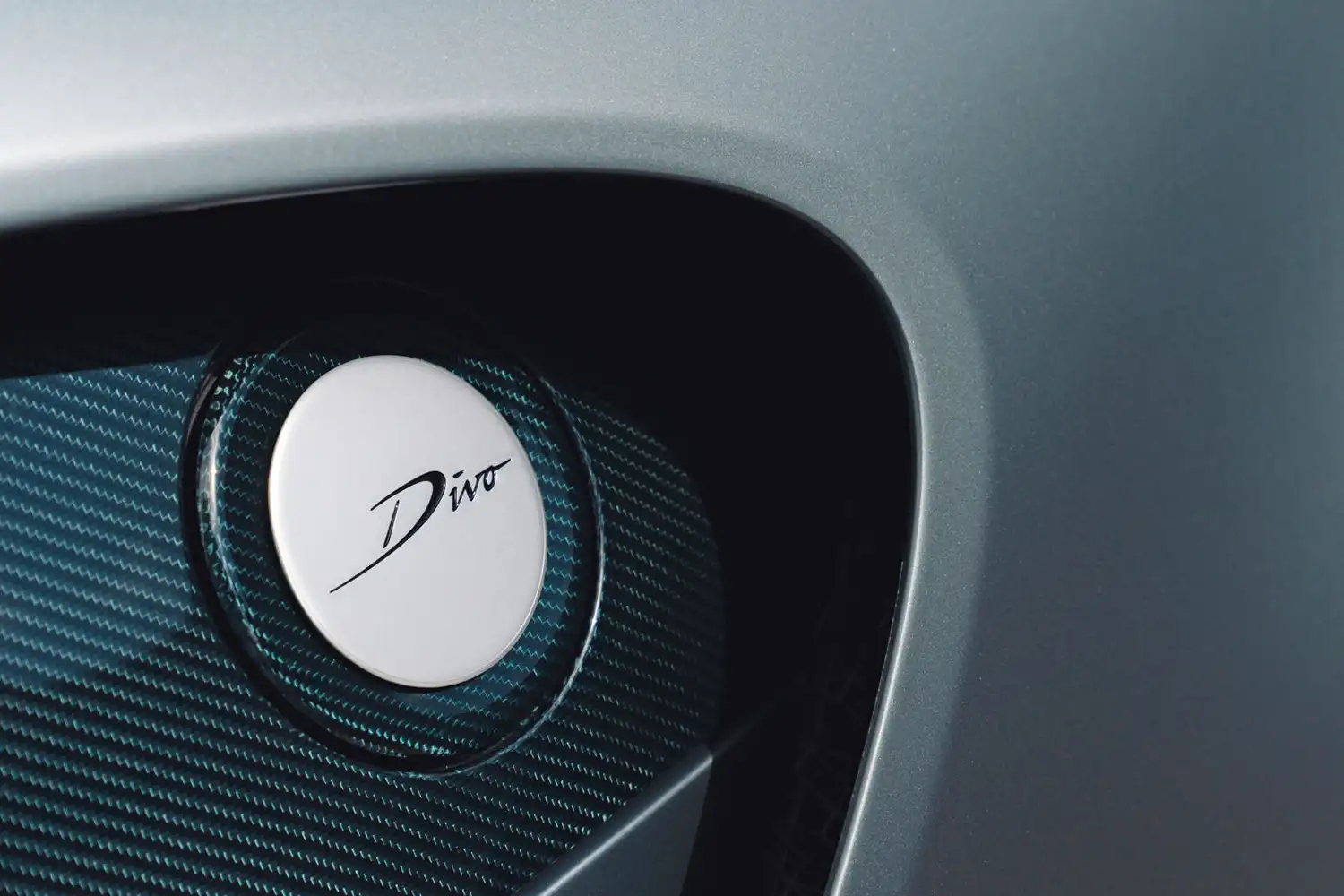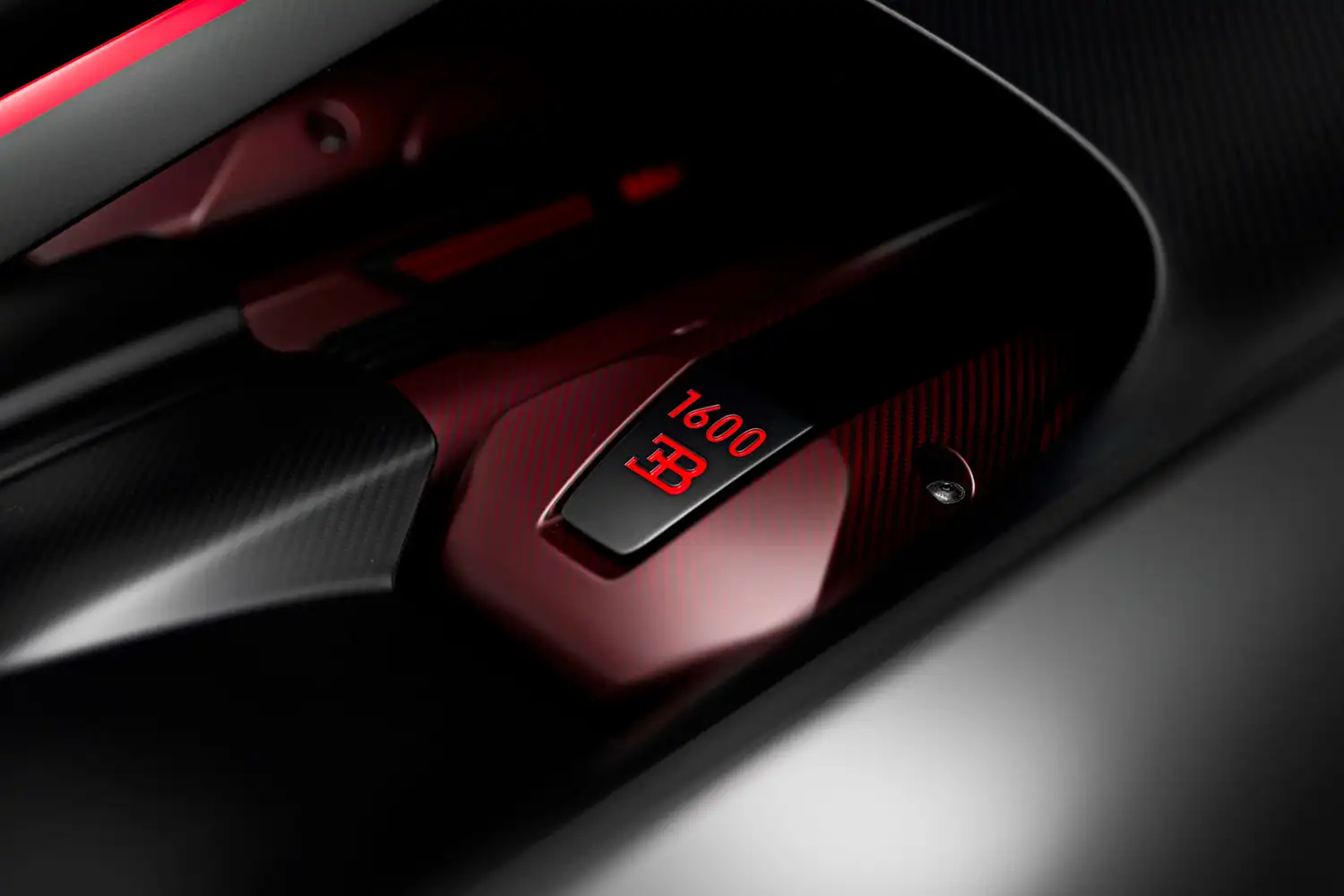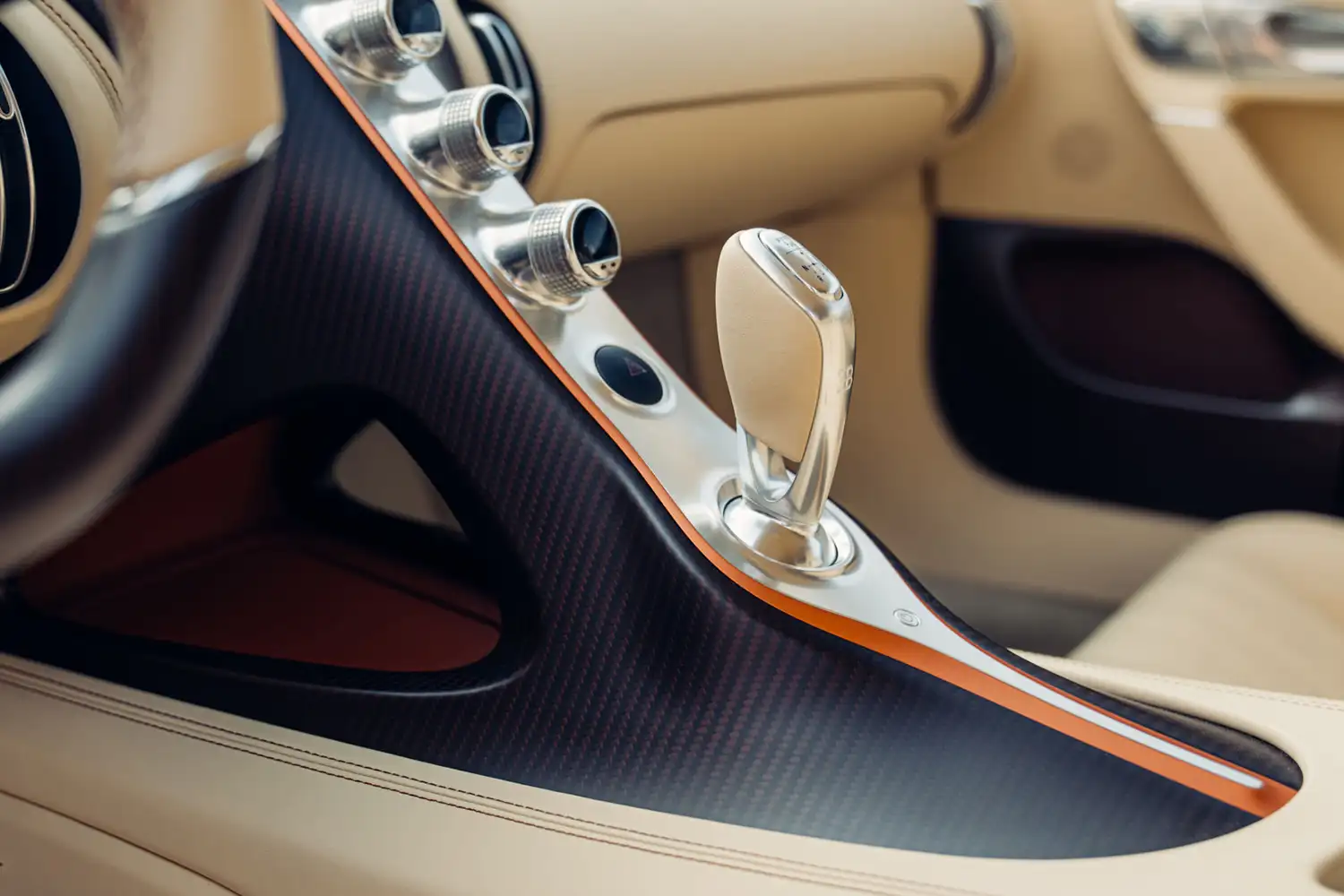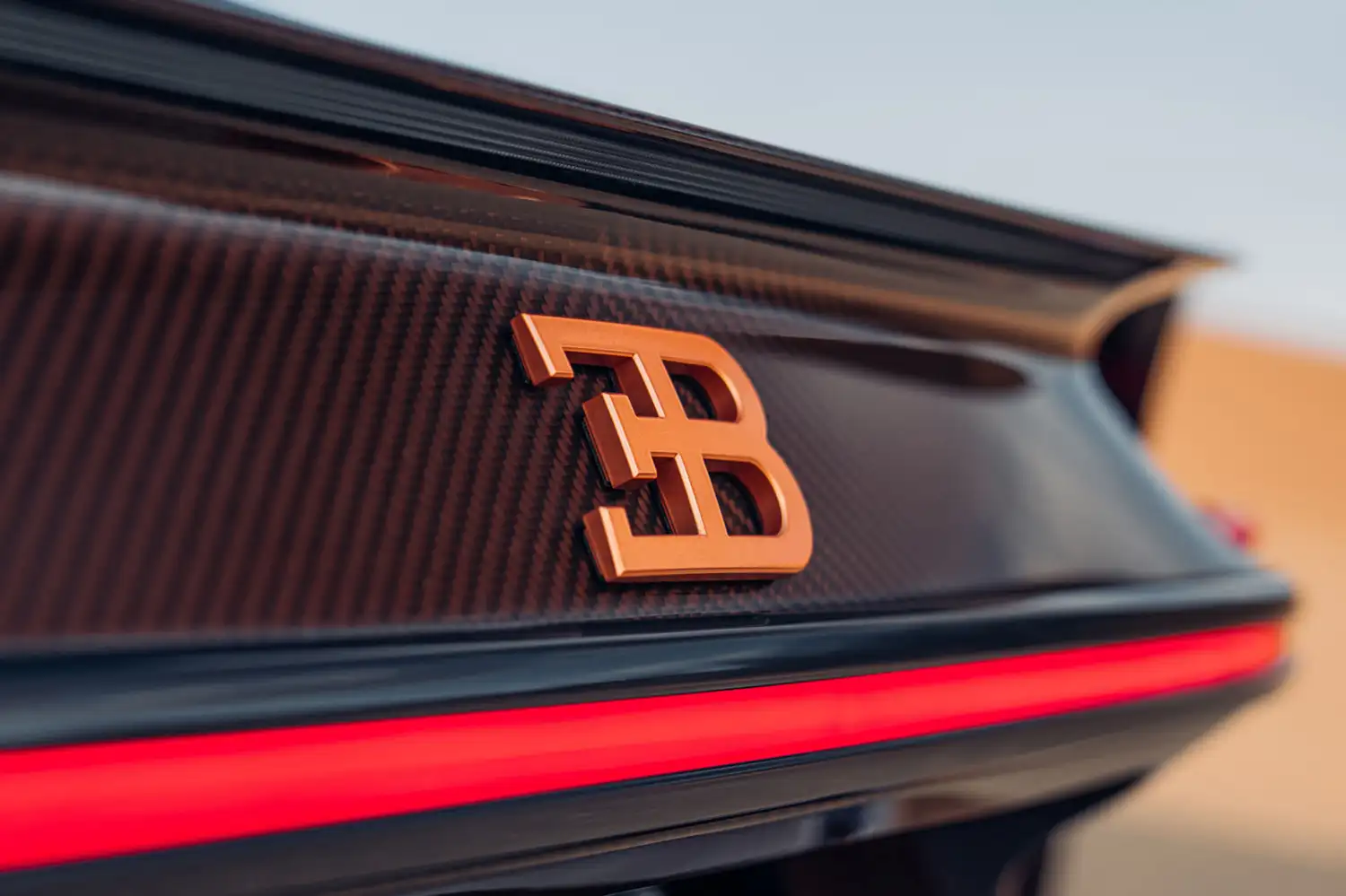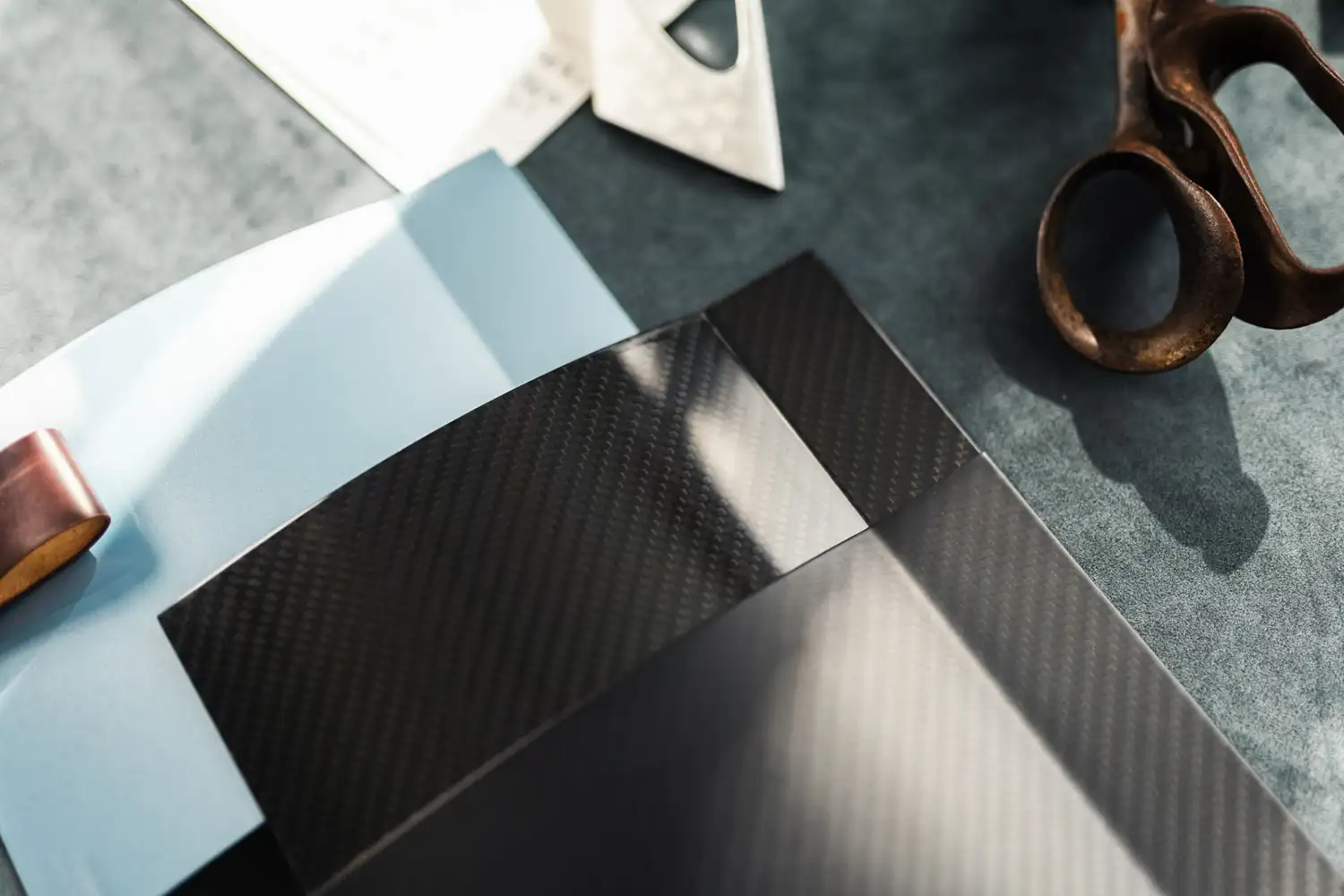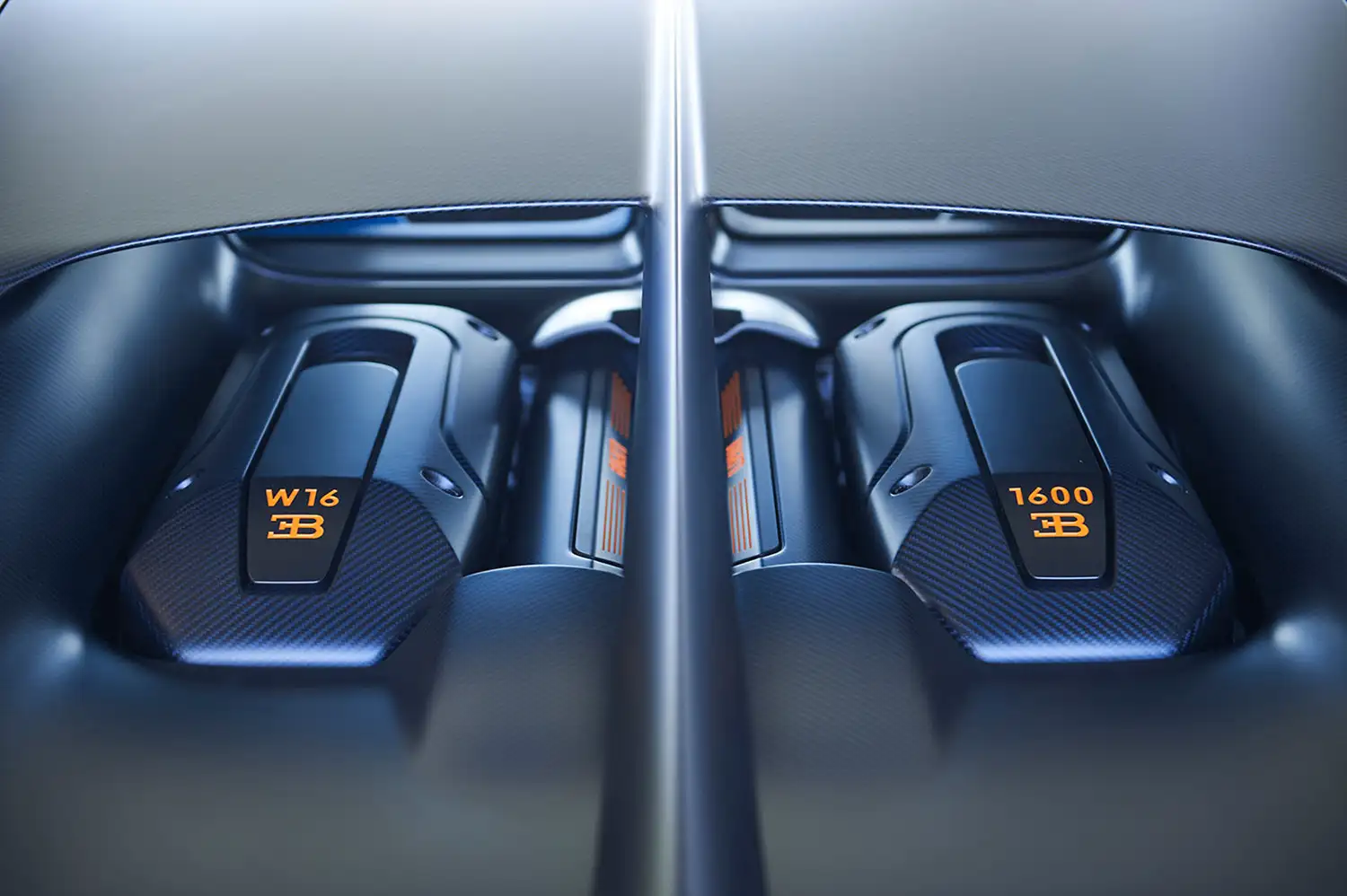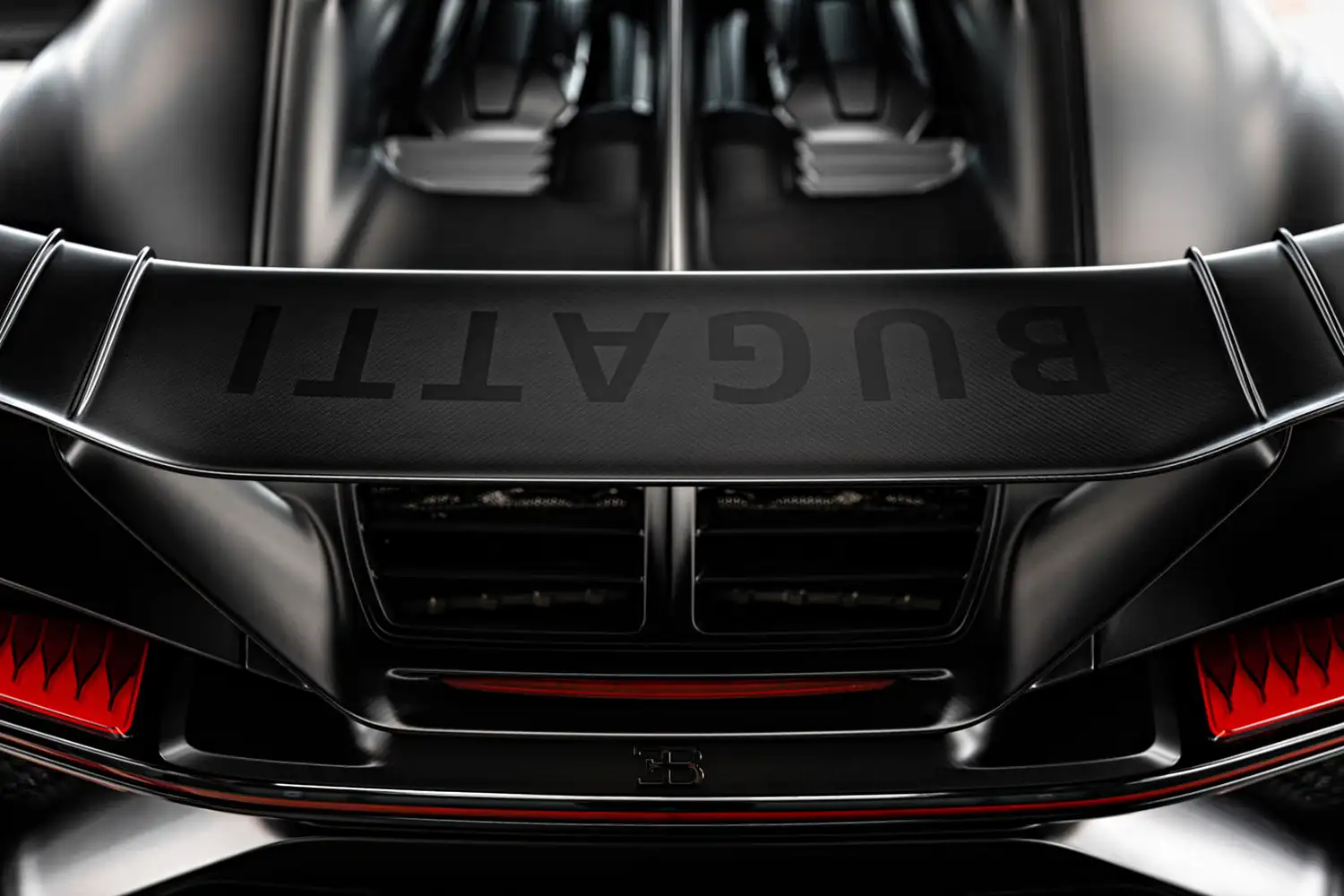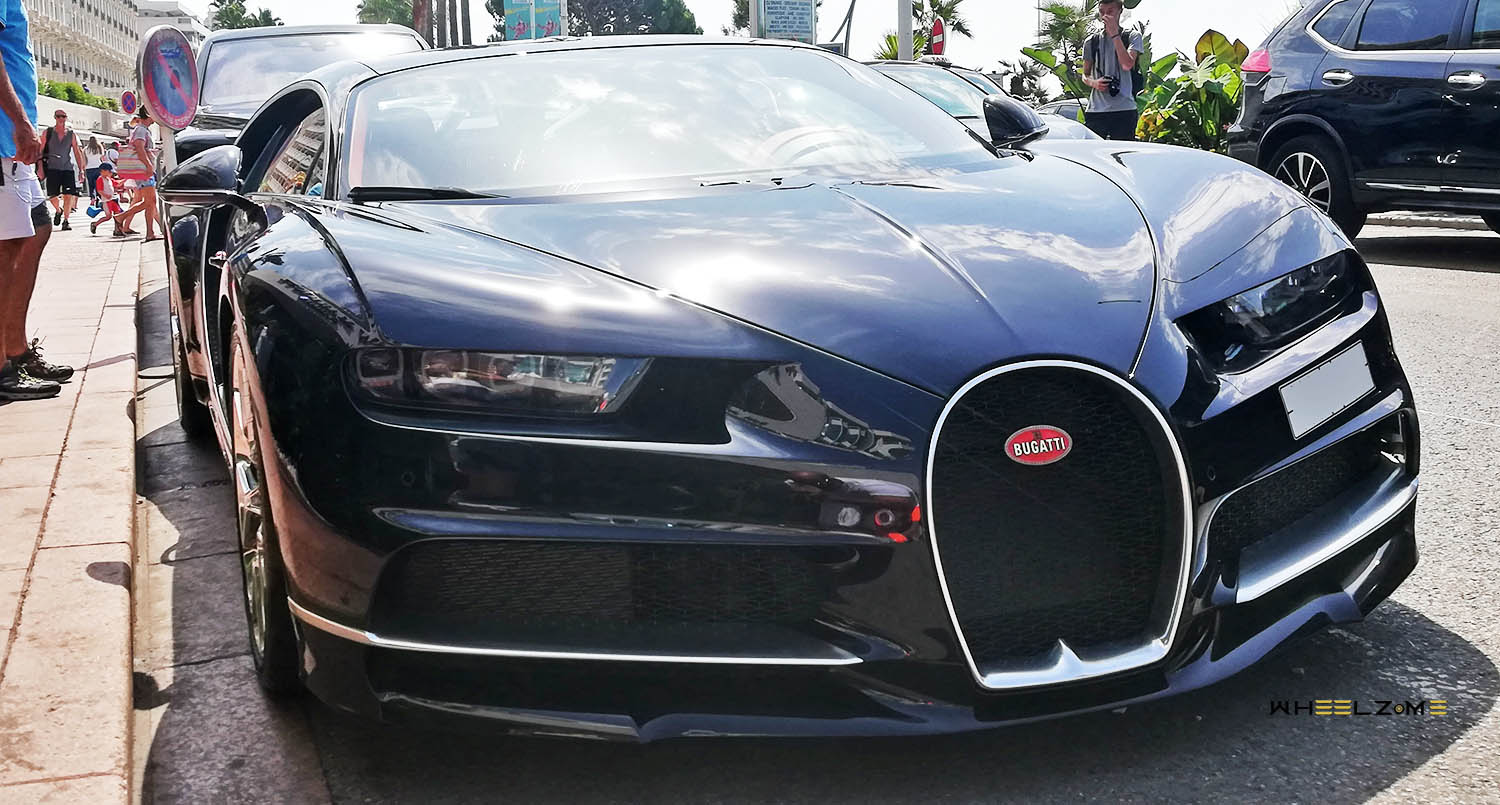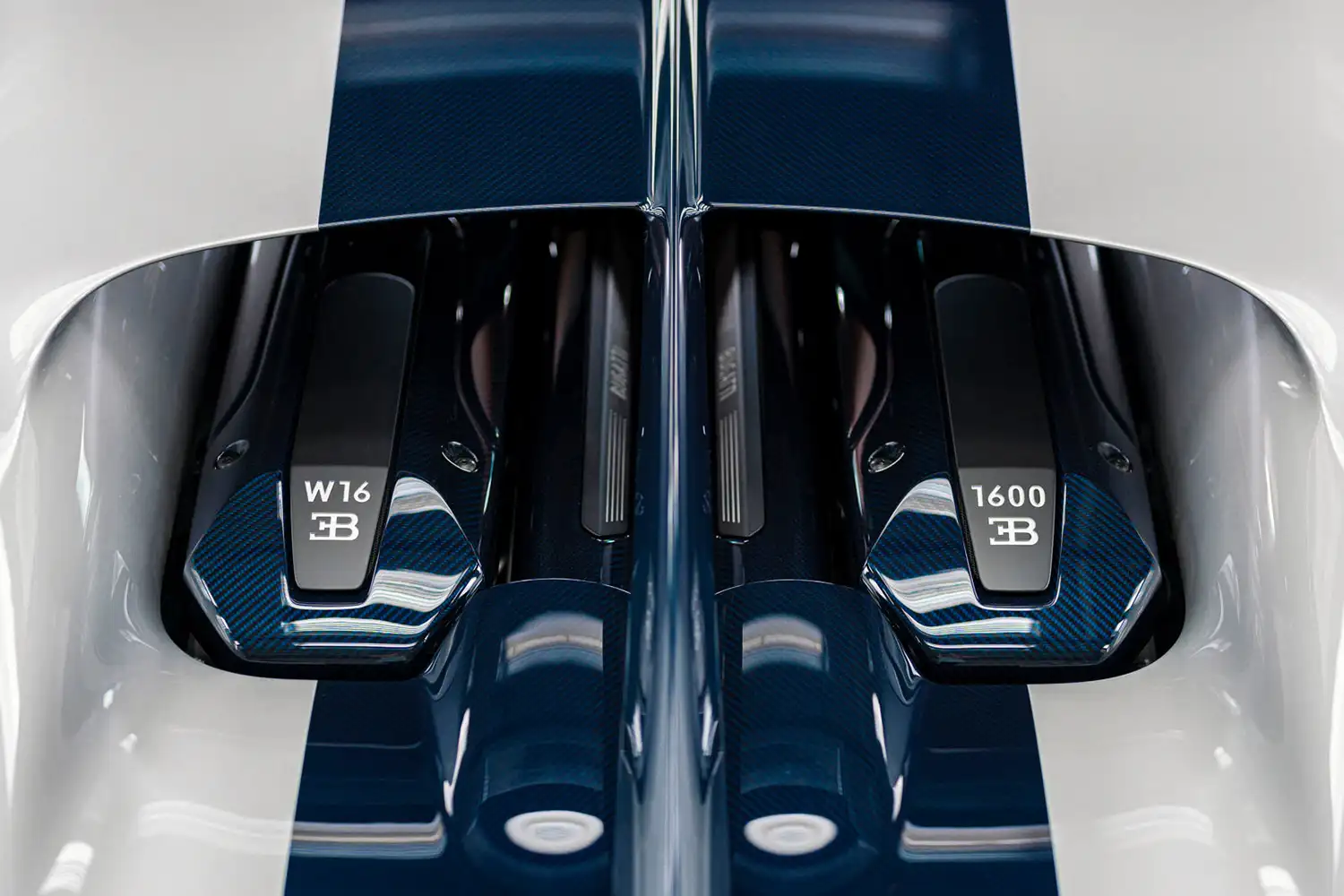
The most abundant material in a Bugatti is carbon fiber. Not only is it used in the monocoque, but the body is also shaped from this advanced, lightweight and incredibly strong substance. Without its cutting-edge properties, a Bugatti hyper sports car could not offer the incomparable performance that it does. But in a Bugatti, carbon fiber is not just functional – it is also beautiful.
Ever since the EB110, one of the world’s first production cars fitted with a carbon fiber monocoque, this material has formed a core part of the Bugatti ‘Form Follows Performance’ design philosophy. It was on the Veyron Pur Sang in 2007 that the natural beauty of the fibers first come to the fore, clear-coated on this special edition car to showcase the stunning raw materials that make up a Bugatti hyper sports car. Today, Bugatti offers its customers nine different tints and various levels of visible carbon fiber – but the process of creating a material that is both beautiful and strong is one of intricate craft and complexity.
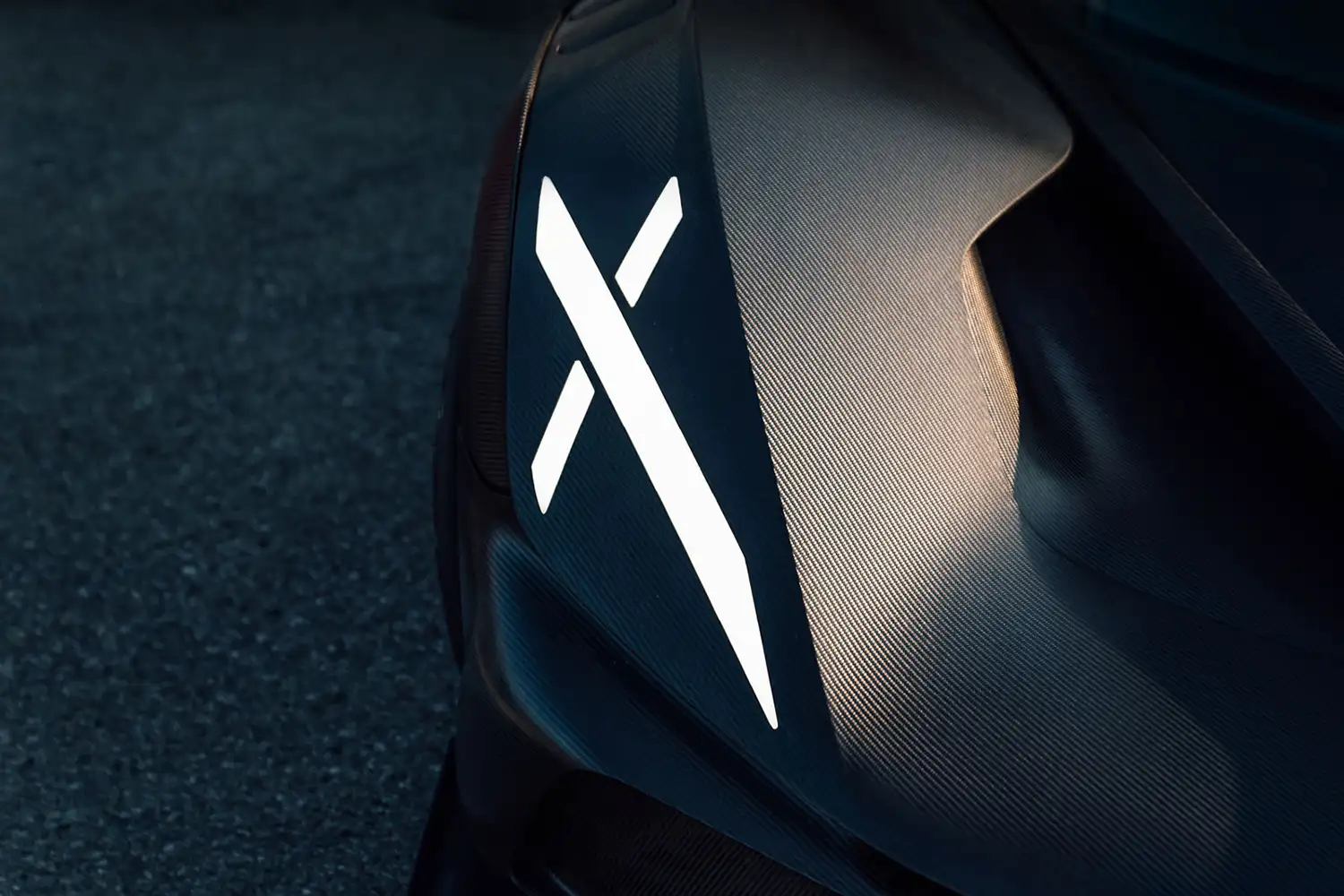
Carbon fiber body panels are made from sheets of overlapping woven fibers that are extremely thin, at around a tenth of the width of a strand of human hair. But the way these fibers are arranged is absolutely crucial to the strength of the sheets, most rigid in the direction that the fibers are pointing. And although the process of aligning them may be difficult and time-consuming, the benefits speak for themselves; body components made of carbon fiber weigh 20-30% less than a corresponding element made of aluminum, or 50% less in the case of steel, while still being very resistant.
Just as Bugatti did with the Veyron Pur Sang in 2007, today it offers customers a wide range of nine visible tinted carbon fiber colors for the body, where the weave of the fibers is on full display – covered only with transparent lacquer, which can also be tinted in one of nine different finishes. But the process of creating this finish takes months to perfect, requiring the skill of experienced craftspeople that understand both the visual and structural importance of carbon fiber.
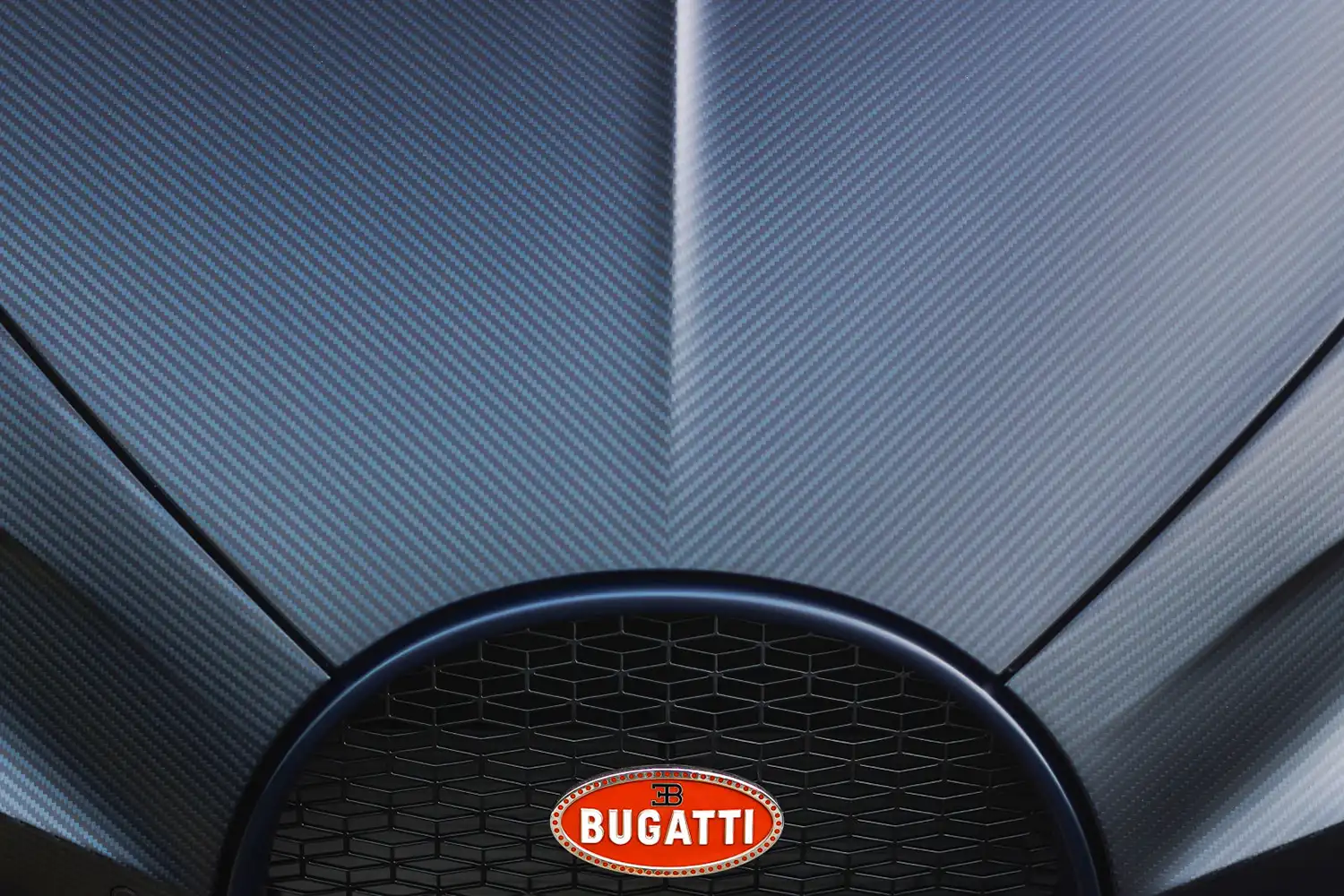
The largest part – a side panel which is around 2m long – takes nearly a week to produce, culminating in the raw materials being placed into a mold and then “baked” in an autoclave at 248°F (120°C) under high pressure and for around two hours.
For these panels, Bugatti engineers will have worked with materials experts to dictate exactly which direction the carbon fibers should flow to give the car the necessary rigidity. But for those customers that opt for a visible carbon fiber finish, it is the design team that decides the direction of the fibers in the first layer. The desire is to create a flowing pattern across the whole surface of the car, visually strengthening its lines while also lining up perfectly between panels.
The design team requires the carbon fibers to be aligned at a 45° angle, with a perfect fishbone in the middle. Anything more than 1 or 2° out and the panel will have to be made from scratch. Any fibers out of position, any fraying or any bumps or kinks in the material and the panel will have to be made again. The materials experts and the design team work vigorously to ensure every single millimeter of the surface is free from imperfection.
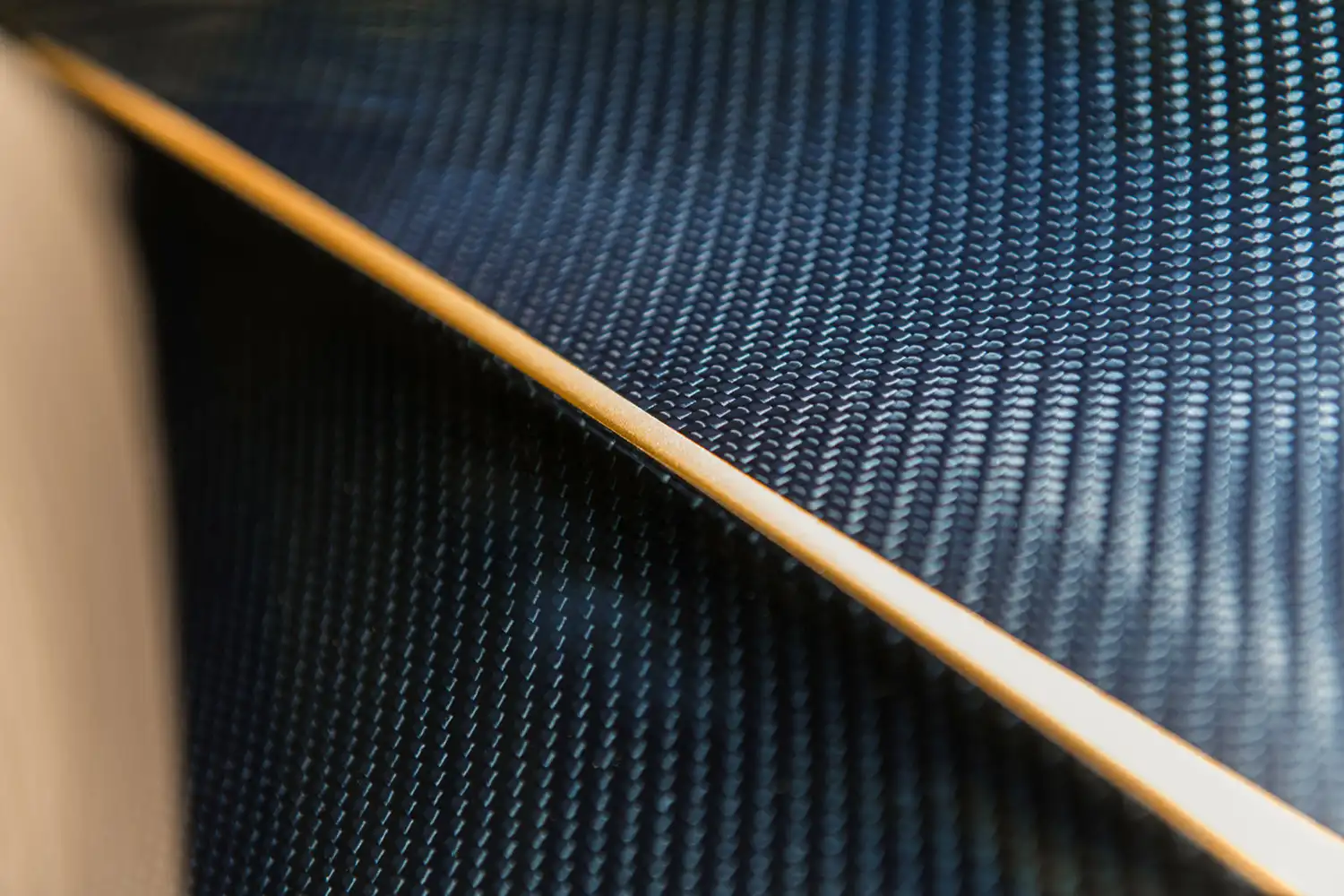
“Creating the perfect visible carbon fiber finish takes our expert craftspeople months to complete, and we strive to offer one of the widest ranges of tints and finishes in the industry. The precision necessary to ensure thousands of fibers, perfectly created, to flow without interruption and at the ideal angle all across the car takes an enormous level of expertise, patience and talent. The body is the most visible part of a Bugatti hyper sports car, and we want it to project the attention to detail that we apply to every single piece of engineering and design on one of our cars.”
Christophe Piochon President of Bugatti Automobiles
But even once these panels reach the impeccable standards of Bugatti, the pieces must all come together in perfect harmony as part of one of the most complex engineering jigsaw puzzles in the world. The process to perfectly align the flow of the carbon weave – whilst ensuring there is an optimum ‘flushed gap’ between all parts and components – is one that is meticulous, time-consuming and highly detailed-driven. But it’s a process that Bugatti has honed over many years, ensuring each and every automobile that leaves the Atelier in Molsheim is flawless.
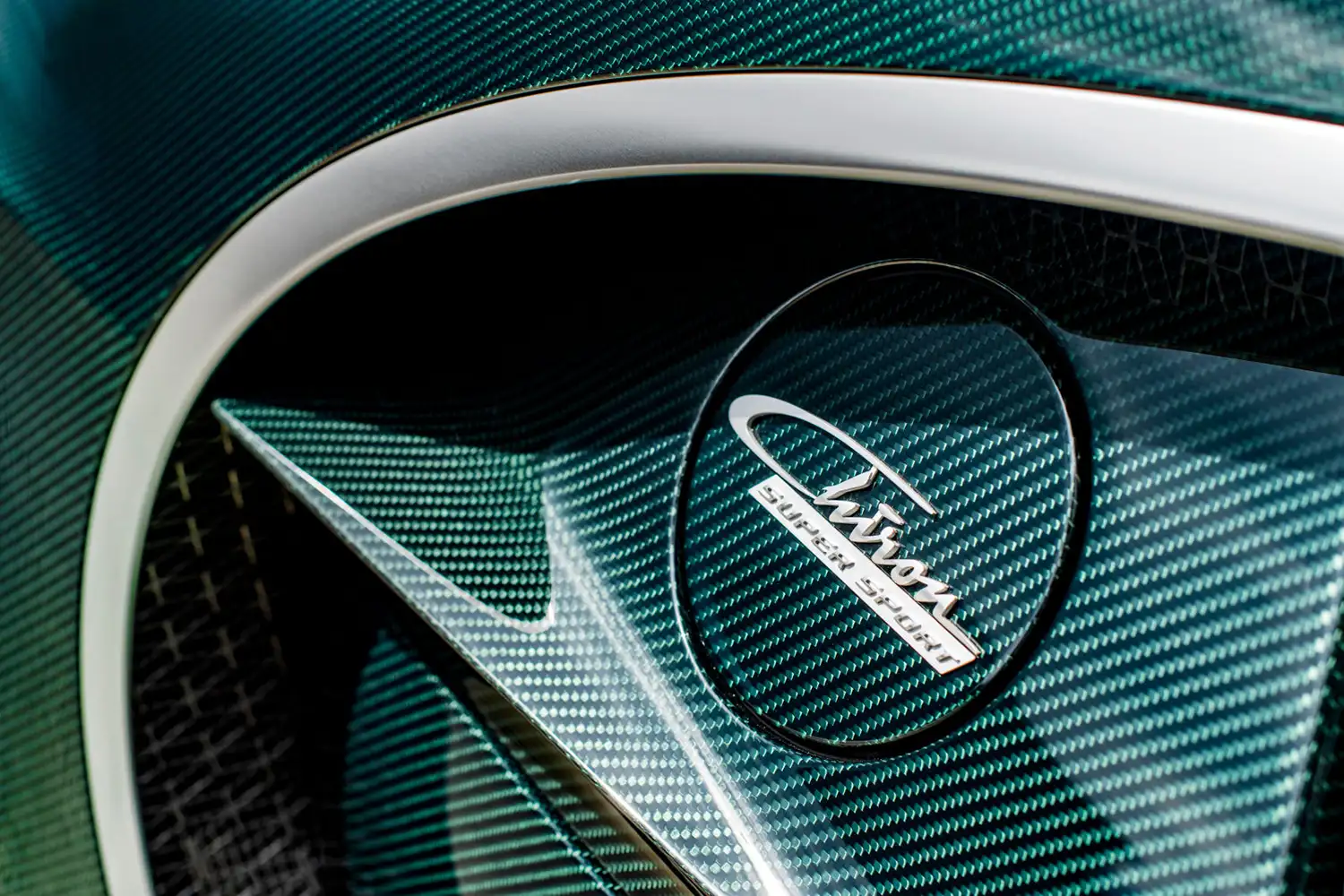
Once the puzzle is complete, the panels can be finished. Paint technicians apply a clearcoat to them individually, which is sanded and polished before being applied again to create a rich sheen that emphasizes the weave. If a customer wishes, a subtle tint can be applied in the next layer to give the weave a color that ensures the beauty of the carbon fiber remains visible. And then depending on the finish, up to three further layers of clearcoat are applied again, entirely by-hand and then polished into its final form.
